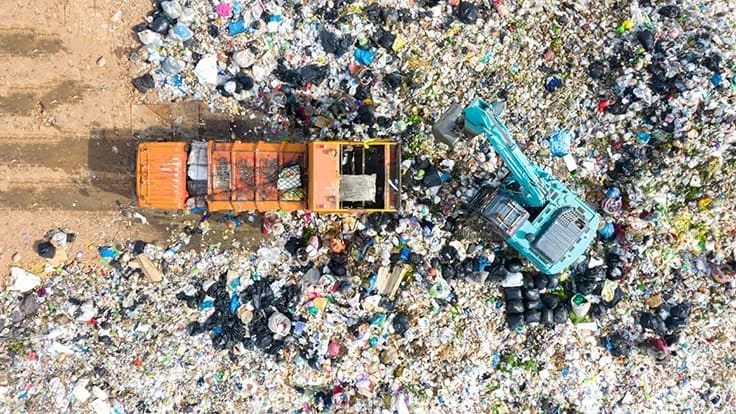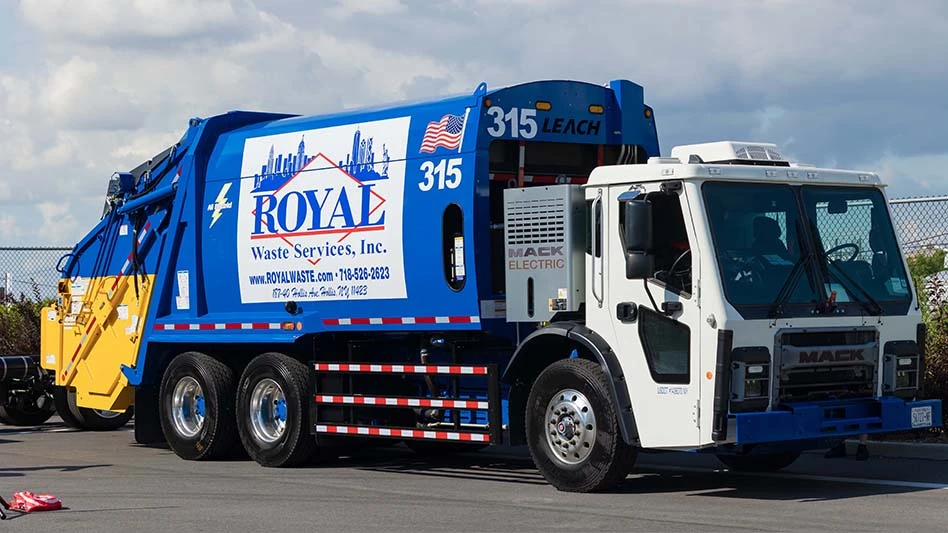
The Solid Waste Association of North America’s (SWANA’s) Applied Research Foundation (ARF) has issued a report summarizing and analyzing current management options and treatment technologies that can be used to address PFAS chemicals contained in landfill leachate.
PFAS, or per-and polyfluoroalkyl substances, are found in many consumer products, including stain-resistant carpeting, non-stick cookware, water-resistant clothing, and cosmetics. When these products are discarded as municipal solid waste (MSW), they present challenges to the MSW management facilities, including MSW landfills, that receive them.
Over the past few years, a key issue that has arose is how to treat landfill leachate for PFAS removal. In a national study, the mean PFAS concentrations measured in the leachate from 18 U.S. landfills ranged from 9,400 to 11,200 part per trillion (ppt). In comparison, the Health Advisory Level issued by the U.S. Environmental Protection Agency for drinking water is 70 ppt.
In 2019, the ARF’s Disposal Group selected the topic of PFAS management and treatment options for landfill leachate for investigation. According to SWANA, the research findings presented in the resulting report are based on a comprehensive review of the literature and an analysis of the commercially-available PFAS treatment systems as well as other management options for landfill leachate.
The new report was prepared to serve as a companion report to one published by the ARF in June 2021 on “PFAS Fate and Transport in WTE Facilities.”
“PFAS is one of the most important regulatory issues facing the solid waste industry,” stated David Biderman, SWANA’s executive director and CEO. “This report sheds important light on how the disposal of household and commercial waste that contains PFAS can be effectively accomplished at modern landfills that meet EPA’s Subtitle D regulations.”
Based on this research, SWANA said the organization is optimistic regarding the positive role that modern MSW landfills can play in the management of solid waste—such as carpeting and clothing—that contains PFAS. By disposing of these products in landfills and effectively treating landfill leachate for PFAS removal, the solid waste industry can provide society with an effective and proven method of managing PFAS wastes.
“We appreciate the support and involvement of our Disposal Group subscribers who submitted and voted for this important research topic and provided funding support for the research effort,” said SWANA’s Director of Applied Research Jeremy O’Brien.
The full report, PFAS Management and Treatment Options for Landfill Leachate, is currently only available to SWANA ARF subscribers.
Latest from Waste Today
- US Senate backs reduced cuts to EPA
- Waste Connections announces Q2 results
- Returnity and Cosmoprof to address reusable bag waste
- SWANA releases report on aging WTE facilities
- New economic assessment reveals cost benefits of California’s SB 54
- Premier Truck Sales & Rental opens new facility
- TeknTrash Robotics, Sharp Group partner on humanoid robot pilot
- Stadler equips mixed waste sorting plant in Sweden





